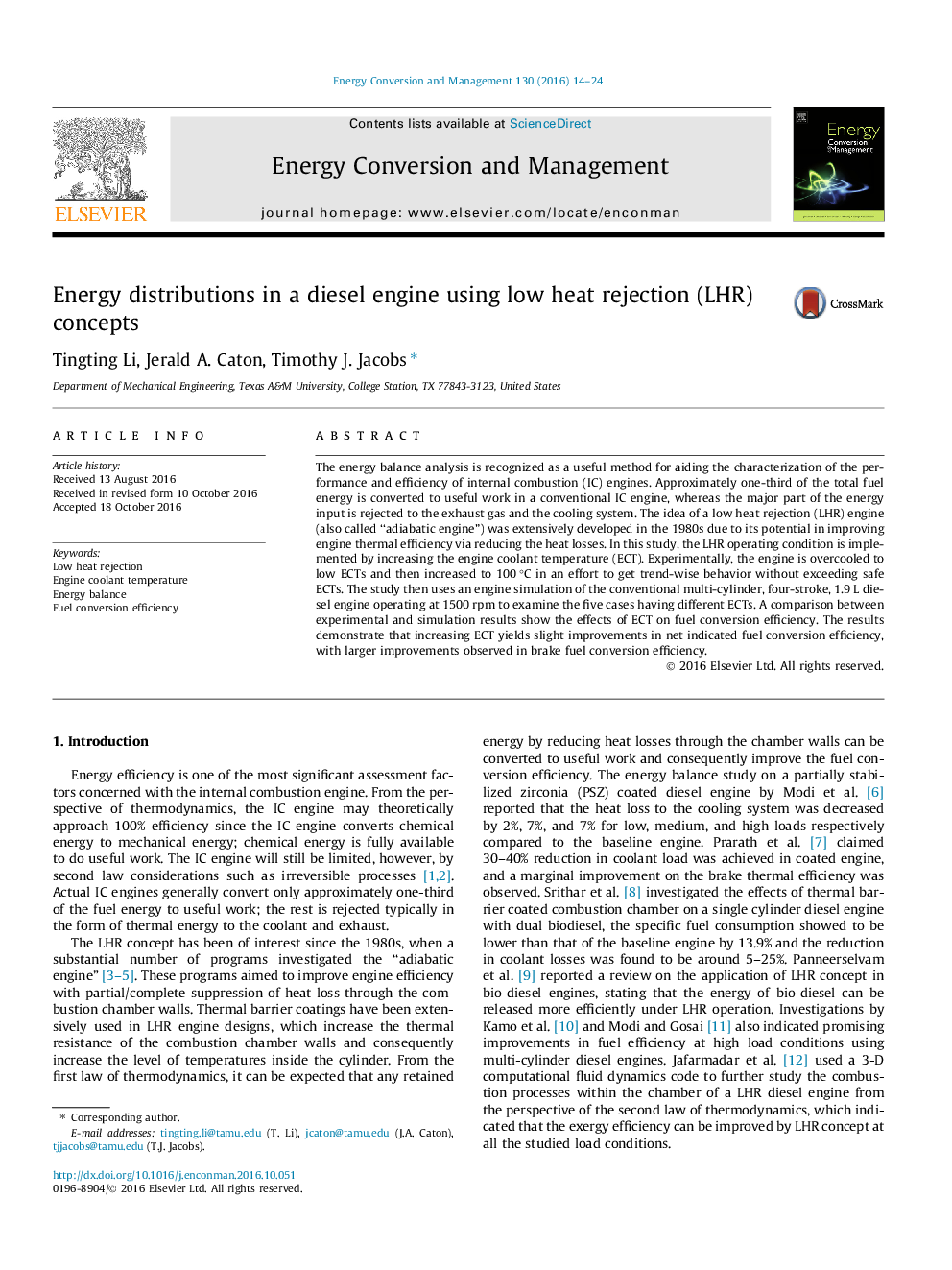| کد مقاله | کد نشریه | سال انتشار | مقاله انگلیسی | نسخه تمام متن |
|---|---|---|---|---|
| 5013181 | 1462832 | 2016 | 11 صفحه PDF | دانلود رایگان |
عنوان انگلیسی مقاله ISI
Energy distributions in a diesel engine using low heat rejection (LHR) concepts
دانلود مقاله + سفارش ترجمه
دانلود مقاله ISI انگلیسی
رایگان برای ایرانیان
کلمات کلیدی
موضوعات مرتبط
مهندسی و علوم پایه
مهندسی انرژی
انرژی (عمومی)
پیش نمایش صفحه اول مقاله

چکیده انگلیسی
The energy balance analysis is recognized as a useful method for aiding the characterization of the performance and efficiency of internal combustion (IC) engines. Approximately one-third of the total fuel energy is converted to useful work in a conventional IC engine, whereas the major part of the energy input is rejected to the exhaust gas and the cooling system. The idea of a low heat rejection (LHR) engine (also called “adiabatic engine”) was extensively developed in the 1980s due to its potential in improving engine thermal efficiency via reducing the heat losses. In this study, the LHR operating condition is implemented by increasing the engine coolant temperature (ECT). Experimentally, the engine is overcooled to low ECTs and then increased to 100 °C in an effort to get trend-wise behavior without exceeding safe ECTs. The study then uses an engine simulation of the conventional multi-cylinder, four-stroke, 1.9 L diesel engine operating at 1500 rpm to examine the five cases having different ECTs. A comparison between experimental and simulation results show the effects of ECT on fuel conversion efficiency. The results demonstrate that increasing ECT yields slight improvements in net indicated fuel conversion efficiency, with larger improvements observed in brake fuel conversion efficiency.
ناشر
Database: Elsevier - ScienceDirect (ساینس دایرکت)
Journal: Energy Conversion and Management - Volume 130, 15 December 2016, Pages 14-24
Journal: Energy Conversion and Management - Volume 130, 15 December 2016, Pages 14-24
نویسندگان
Tingting Li, Jerald A. Caton, Timothy J. Jacobs,